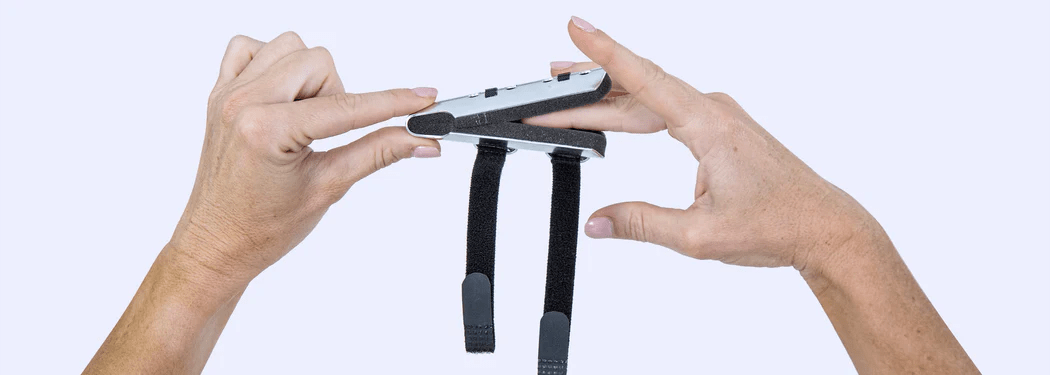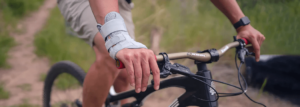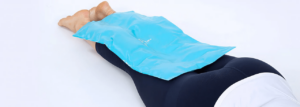Proper Ways to Treat a Sprained Finger
Sprained finger treatment is designed to return you to normal daily activities quickly and safely. Dealing with symptoms of pain and swelling can make it hard to use your hand and finger as you normally would. Luckily, having a good treatment plan in place can help you bounce back quickly. Keep reading to learn more about how to treat a sprained finger.
Home Remedies
Treating your finger sprain at home is always the best first step. In fact, mild to moderate sprains can potentially be treated exclusively from home. Medical care is typically only needed if you experience severe symptoms or are concerned about complications. Instead start with some of these simple home remedies
RICE
This acronym is always the best place to start with an acute injury. It helps accelerate the healing process and keeps the area as comfortable as possible.
Rest
With any type of new injury, rest should always be the first line of defense. As the body mounts a healing response (via swelling and heat), rest allows it to complete this cascade more efficiently. For a high use area like the finger where you might forget to keep it rested, you may need a finger splint or taping as a reminder.
Ice
Ice can help manage your swelling symptoms and minimize pain. While swelling isn’t necessarily the enemy, it can leave you feeling uncomfortable. Ice in a bag or an ice pack can be applied to the finger for 10 minutes every 2-3 hours throughout the day. Be careful not to ice too long or often to allow the body’s normal healing response.
Compression
Prolonged pressure to the injured area is a great way to promote blood circulation for the healing process. Additionally, compression provides comfort to sensitive pain nerve endings. You can use an elastic bandage to cover the entire hand, tape to address a specific finger, or compression gloves .
Elevation
Every step in the RICE treatment process is about promoting optimal healing. Elevating the hand above the heart allows for better circulation to the hand. Finger sprains can also feel like they’re throbbing after the hand has been dangling at your side or another dependent position. Keeping the hand elevated when possible, especially when icing, will minimize these issues.
Anti-Inflammatory Medication
While anti-inflammatory medication, or NSAIDs, don’t specifically help the body heal, they can provide much-needed pain and swelling relief. Non-steroidal anti-inflammatory medications like ibuprofen, Aleve, and naproxen are over the counter medications that can provide you relief. Follow instructions on the bottle for frequency and use them only as needed since they do carry a risk of side effects such as kidney damage.
Buddy Taping
Buddy taping is a great way to provide support for the injured finger without completely limiting hand and wrist function. This is a great option for mild or moderate sprains. It simply involves using the neighboring fingers for stability. Traditionally, athletic tape is used, however kinesiology tape can also be applied.
For more details on buddy taping and splints, see our full resource.
Splint
Using a finger splint can provide more rigid support for the finger. Typically, you can simply adjust a splint to the appropriate size and position you need them for gaining optimal support. A splint can provide pain relief and prevent you from re-injuring or aggravating the injury.
Finger Exercises
Once you can tolerate moving the finger without increased symptoms, it is now time to start moving the fingers again. There is a delicate balance between rest and exercise. While the injured area needs rest time, too much stagnancy can lead to unnecessary stiffness and loss of strength as well.
Full Finger Range of Motion for Flexibility
You can mix this one up depending on what specific finger and joints you’re focusing on. Simply curl the fingers in toward the top of your palm, touching if possible. Then, alternate between touching the top and the middle of the palm. In between each repetition, completely straighten the fingers before going moving into the next. For an additional stretch, try spreading the fingers apart as far as possible as you straighten them.
Repeat each move (alternating) 10-20 times.
Power Squeeze for Finger Strengthening
Roll therapy putty into a ball, roll up a small towel, or find a soft ball for this one. Simply place the object you will be squeezing in the palm of your hand, wrap your fingers around it, and squeeze for 3-5 seconds. Keep the squeeze as pain-free as possible.
Repeat for up to 20 repetitions daily. Progress the level of squeeze as tolerated.
Surgery
With more severe injuries, surgery may be required. When a grade 3 sprain results in instability of the finger there is generally significant compromise of connective tissue in the finger necessary for normal function. If the finger has been dislocated, there is typically tissue damage that affects the biomechanics of the finger that will also need to be repaired. Severely stretched or completely torn ligaments can be reattached in surgery to restore finger stability and function.
Surgical intervention will typically require 4-6 weeks in a splint and then a very gradual return to full hand and wrist range of motion, strength, and function. Typically, a physical therapist will help you with the recovery process. You can expect to be back to full function within 12-16 weeks.
When to See a Doctor
While most finger sprains can be treated at home, more severe injuries may require a visit to your doctor. If your symptoms of pain and swelling are severe or they aren’t getting better within a week or two, it is time to talk to your physician. They can assess the level of damage, rule out other complications like fractures with an x-ray, and give you recommendations for maximizing your finger healing.
Often, a few sessions of physical therapy can also help you get on track with education, pain modalities, and a personalized home program.
Safe and Effective Finger Sprain Treatments
Unfortunately, finger sprains are quite common due to the continual use of our hands for all daily activities. Luckily, they can most often be treated at home and in a few short weeks your finger will feel good as new. With a good understanding of your injury and what to do for treatment, you can feel confident in the recovery process.






